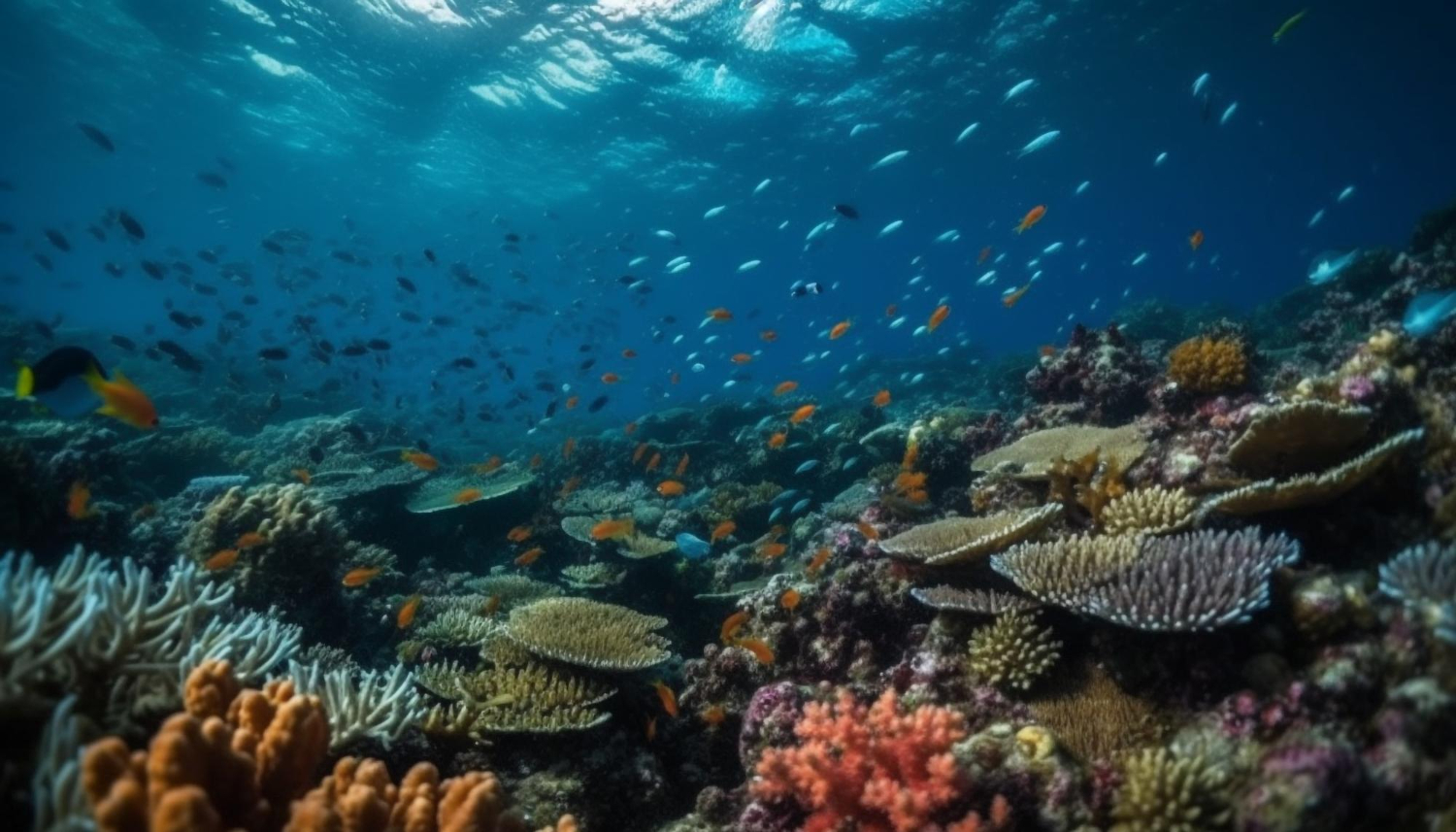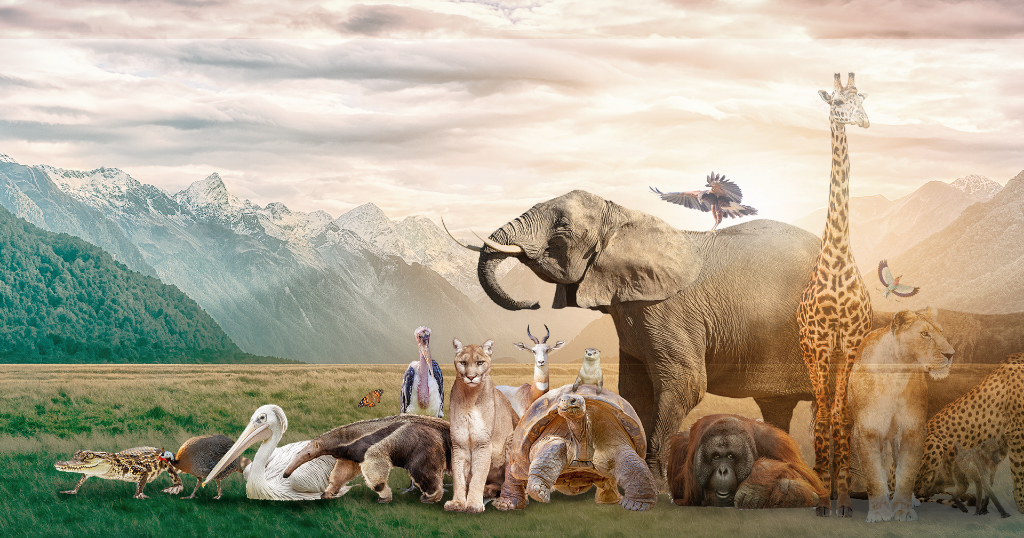Biodiversity is the very heart of our life. It is the extraordinary variety of living creatures and ecological communities growing and interacting with each other all over the world. It is the richness and complexity of species and ecosystems throughout the planet continually acquiring and honing the adaptations necessary for survival under constantly changing conditions.
Biodiversity includes plants and animals, as well as the processes and inter-relationships that sustain them. Plants absorb and convert nutrients from the soil in order to grow. In turn, they produce oxygen for humans and animals to breathe and survive. Insects, birds, and other pollinators feed on nectar from flowers; in doing so, they also cross-fertilize the flowers. Benefits to ecosystems include climate and water regulation, the creation and protection of soils, reduction of floods and soil erosion, shoreline protection, and providing natural controls of agricultural pests.
It is useful and indeed necessary to remind ourselves that a healthy human environment depends entirely on biodiversity. Everything we eat, wear and produce on this planet is ultimately dependent on its biodiversity, yet we behave as if it hardly matters. While we ponder over the question of whether there is life on Mars, we seem to have forgotten that only a fraction of an estimated 10 million to 20 million species on Earth have been found and described, while countless others, both known and still undiscovered, are driven to extinction. We are now losing wild species at a rate that has been estimated to be 100 to 1000 times faster than the prehistoric background rate.
We humans have come a long way in gaining our independence from the whims of Mother Nature. We have learned how to build shelters and clothe ourselves. Through agriculture and irrigation, we can control our own food supply. We have built schools, hospitals, computers, automobiles, airplanes and space shuttles. So what is the big deal if a bunch of plants, animals and simple organisms die out?!
The problem with loss of biodiversity is that Earth functions like an incredibly complex machine; there are no unnecessary parts. Each species, from the lowliest microbe to humans, plays a part in keeping the planet running smoothly. In this sense, each part is related. If a lot of those parts suddenly vanish, then the machine, that is Earth, cannot function properly.
For example, the crops we grow through our clever use of agriculture are enabled by the nitrogen present in the soil. This nitrogen nourishes and strengthens our crops; but where does it come from? Worms, bacteria and other life found within the soil decompose vegetation; in doing so, they produce the nitrogen that crops need. This is also how nutrient-rich compost is made. If these species were eliminated, then our crops would not grow properly.

This is true for ocean ecosystems too. The ocean, along with land-based plant vegetation, plays a major role in absorbing carbon dioxide (CO2). The ocean does not absorb this CO2 on its own. It relies on organisms such as phytoplankton; microscopic aquatic plant life; to absorb the CO2. Loss of phytoplankton means we lose adequate levels of breathable air.
Even some of our own modern advances in technology depend on nature. Modern medicine owes much to the properties found naturally in plants and bacteria. Medications such as painkillers, penicillin and inoculations are based on natural organisms. The structure of these living organisms has been analyzed and synthesized to produce some medications; but others, such as antibiotics, still use the actual organisms. In total, this accounts for one-quarter of all the prescription drugs. However, if Earth suddenly lost its hearty biodiversity, drugs that have yet to be discovered would also be lost. Thus, threats that put biodiversity in danger are threatening to humanity itself.
Even if we humans could find a way to overcome a catastrophic loss of biodiversity, our existence on Earth would certainly be changed for there is a critical economic aspect to biodiversity as well. Services provided for humanity by Mother Nature vary from ecotourism and pollination to soil formation and pharmaceuticals, just to name a few.
These services would still be required, with or without a diverse global ecosystem. As the resources that provide them dwindle, humans would have to replace them in order to survive. Stocks of these resources would quickly and significantly increase in value; competition would develop with wealthier and better armed countries inevitably winning. Life, indeed, would change for humanity as a result of biodiversity loss. It would quickly get worse.

Image.
So, How Bad Is It?
Biodiversity is disappearing at an alarming rate. Some predict that 50% of all mammals and birds will be extinct within the next century.
Over the past centuries, the documented extinction rates has been approaching 1,000 times the background rate or rate at which species have been becoming extinct for the past 65 million years, since the major extinction event that closed the Cretaceous Period and the Mesozoic Era, which coincided with the loss of the last surviving dinosaurs. This was the fifth major extinction event in Earth history, a time when two-thirds of all terrestrial organisms that existed at that time disappeared and the character of life changed permanently. If present trends continue, the current extinction rate can climb to 10,000 times the background rate during the next century.
If proof were needed that conservation work is more urgent than ever, the recently published 2009 “Red List” of Threatened Species describes the situation clearly. The Red List, from the International Union for the Conservation of Nature (IUCN), highlights the alarming ongoing rate of biodiversity loss around the world. More than one-third of the 47,677 species assessed in the latest list are currently threatened with extinction.
The harsh truth is that this decline is mainly the outcome of human activity; such as deforestation, overfishing, pollution and our copious, climate-changing greenhouse gas emissions. The good news is, this means it is largely in our control, and we can stop it; but only if we all work urgently and together.
Where Did We Go Wrong?
While extinction is a natural process; generally, a species will last for an average of 2 million to 10 million years. However, species and ecosystems today are threatened with destruction at a rate rarely seen in history as a result of human actions, five of which are major threats to biodiversity.
Invasive Alien Species (IAS): Species not native to an area; they arrive there via trade, transport, travel or tourism, all of which have increased greatly because of globalization. These species are harmful to native biodiversity in a number of ways; by becoming competitors, predators or parasites, or by spreading disease.
Climate Change: Land life is destroyed by fires, floods and insect plagues, all of which are expected to become more frequent. Marine life is also affected by the rise in sea temperatures and increased acid levels due to the increasing concentration of dissolved atmospheric carbon dioxide. Not to mention the serious impact on polar ecosystems; namely, thawing frost and losses of ice sheets.
Habitat Change: Thousands of years of human activity; habitat destruction, degradation, and unsustainable management; have reduced forest coverage from around 50% to 30% of total land area, and deforestation continues at an alarmingly high rate. Almost 70% of Mediterranean forests and woodlands were lost by 1990. In the Caribbean, average hard coral cover has declined from about 50% to 10% in the last three decades, and some 35% of mangroves have been lost in the last two decades. In the Arctic, the average annual sea ice extent has declined by about 8% in the past 30 years, with a loss of 15% to 20% in summer sea ice extent over the same period.
Overexploitation: Humanity has always relied on nature for survival, and exploitation of species for food, clothing, and shelter has, in the past, always been sustainable. Today, many species are hunted, trapped or killed above their rate of replacement.
Pollution: Pollutants in air, water, and soil influence organisms in many different ways; from altering the rate of plant growth to changing reproduction patterns, and in extreme situations, leading to extinction. Excess pollutants can also leave species weakened and susceptible to other drivers of biodiversity loss.
Sadly, humans depend on nature to dispose of waste products. As a result, our oceans, rivers, lakes, air and land have become repositories for industrial and personal waste. The incredible volumes of pollution currently being dumped into the environment overwhelm the Earth’s capacities to absorb, transform or break down, these materials. Some materials take thousands of years to decay, and may become more toxic as they decompose, resulting in long-term environmental damage.
Pollutants dumped into the environment do not just disappear, or remain suspended; they enter the tissues of living things. They are then passed through the food chain, increasing in toxicity; a process known as bioaccumulation, now painfully evident.
Megadiverse Countries, Stores of Biodiversity
Australia is one of seventeen countries described as being “megadiverse”. This group of countries has less than 10% of the global surface, but support more than 70% of the biological diversity on Earth.
The concept was first developed by Russell Mittermeier in 1988. Based on an analysis of primate conservation priorities, he found that four countries accounted for two-thirds of all primate species. The analysis was then expanded to include other mammals, birds, reptiles, amphibians, plants and selected groups of insects. This resulted in seventeen countries being identified, representing more than two-thirds of all (known) life forms and the majority of tropical rainforests, coral reefs and other priority systems.
The megadiverse countries are: Australia, Brazil, China, Colombia, Congo, Madagascar, South Africa, India, Indonesia, Malaysia, Papua New Guinea, the Philippines, Ecuador, Mexico, Peru, United States and Venezuela.
Banner Image.